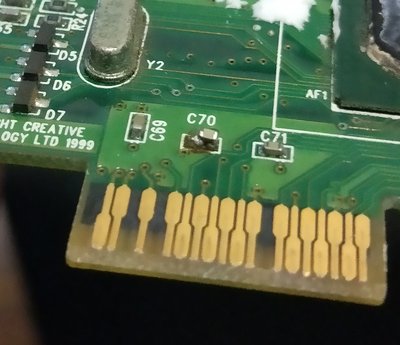First post, by foil_fresh
Hi yall!
Sorry if this isn't the correct place to make this thread but here goes...
I have recently picked up a Creative TNT2 Ultra to put into my PIII pc but have noticed that a capacitor looks loose/is destroyed.
I've attached the picture of the capacitor (C70) on the board.
Does it look broken or does it look previously repaired? BTW don't worry about the white stuff - it's silicone from a previous HSF mounting operation.
Secondly, how would one identify what it is specifically, and where would one get a replacement capacitor? I have looked at buyICnow.com quickly but realise now I don't know what I'm actually looking for as I don't know the specs.
Help? Lol. Thanks.
